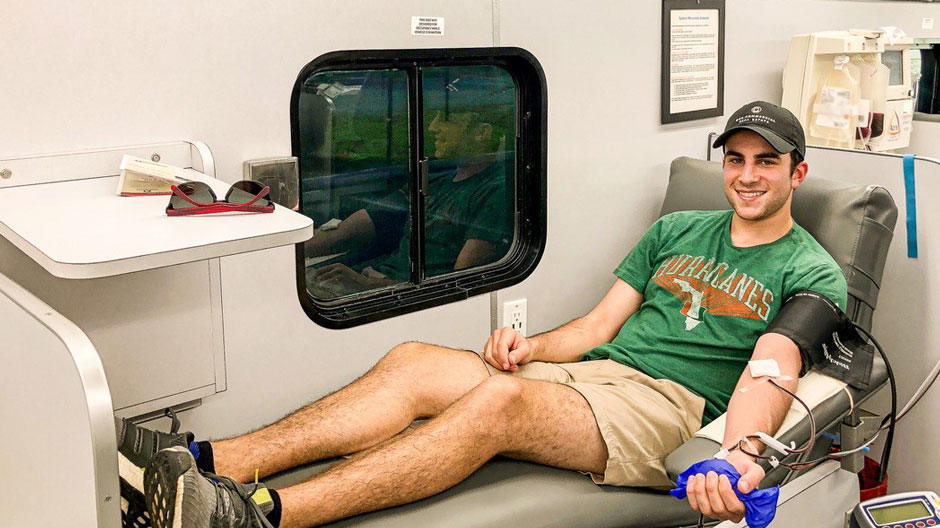In early March, Justin Grauer, a senior majoring in legal studies and real estate at the University of Miami, felt an itch in his throat. A few days later, he recorded an above-average fever. Having read about the early onset symptoms of the novel coronavirus, Grauer wondered if what he was experiencing could be attributed to the virus.
“I isolated myself immediately. On the seventh day, I really began to feel a little bit off. I took my temperature and it was around 104 degrees, which is unusual for me. When I didn’t meet the criteria for the flu, I was able to get tested for COVID-19,” Grauer said.
Though his symptoms remained mild, Grauer consulted with his doctors and was ultimately tested for the virus. Days later, he received the results that showed he had tested positive for COVID-19. After his diagnosis, Grauer became particularly attentive to news and research regarding the treatment and recovery of patients with more severe symptoms. That is when he discovered that his diagnosis had the potential to save lives.
“I began googling everything I could find about it. Upon doing some of these searches, I found out about these different experimental treatments,” Grauer said. “I saw that the convalescent plasma therapy option was a really good opportunity for someone who has recovered from this horrible virus to do something good that a lot of other people do not necessarily have the opportunity to do.”
Convalescent plasma therapy—sometimes referred to as passive antibody therapy—is the process of extracting antibody-rich plasma from the blood of patients who have recovered from the coronavirus. The liquid plasma is then transfused to patients experiencing severe cases of COVID-19.
The process allows for the donor’s recovered antibodies to provide immune system support to those still battling the virus. Utilized to treat illnesses like the flu and measles prior to the creation of their vaccines, convalescent plasma therapy was widely used by doctors in 2003 during the SARS outbreak.
On April 13, the U.S. Food and Drug Administration published guidelines for the use of convalescent plasma therapy as a treatment method for cases of the coronavirus. Health care providers can request emergency Investigational New Drug Applications to receive plasma from local blood banks for patients experiencing life-threatening conditions. The guidelines have helped facilitate blood donation centers around the country in collecting plasma from recovered COVID-19 patients.
“I immediately registered myself with the Red Cross and One Blood, showing that I had a positive test result and documenting the date my symptoms resolved so I could be included in the donor database,” Grauer said.
To qualify as a plasma donor, the FDA included specific criteria. A donor must provide doctors with a positive COVID-19 test result, followed by at least 28 days of presenting no symptoms. Or, the patient can have 14 days without symptoms supplemented by a second, negative COVID-19 test result.
Grauer found himself in a particularly unique position following his registration as a plasma donor. With an AB negative blood type, he is among less than 5 percent of the U.S. population that is considered a universal blood donor. This, he said, added to his reasons for wanting to donate plasma.
He received a second COVID-19 test, confirming that he no longer carried the virus. Within days, a patient in an intensive care unit in South Florida had received Grauer’s convalescent plasma.
Grauer plans to continue donating his plasma to those in need, with hopes of helping many critical patients to recover.
“Until now, I have never had the chance to save someone’s life,” he said. “This has been a humbling experience that has brought to focus what is most important: health, family, and community.”

